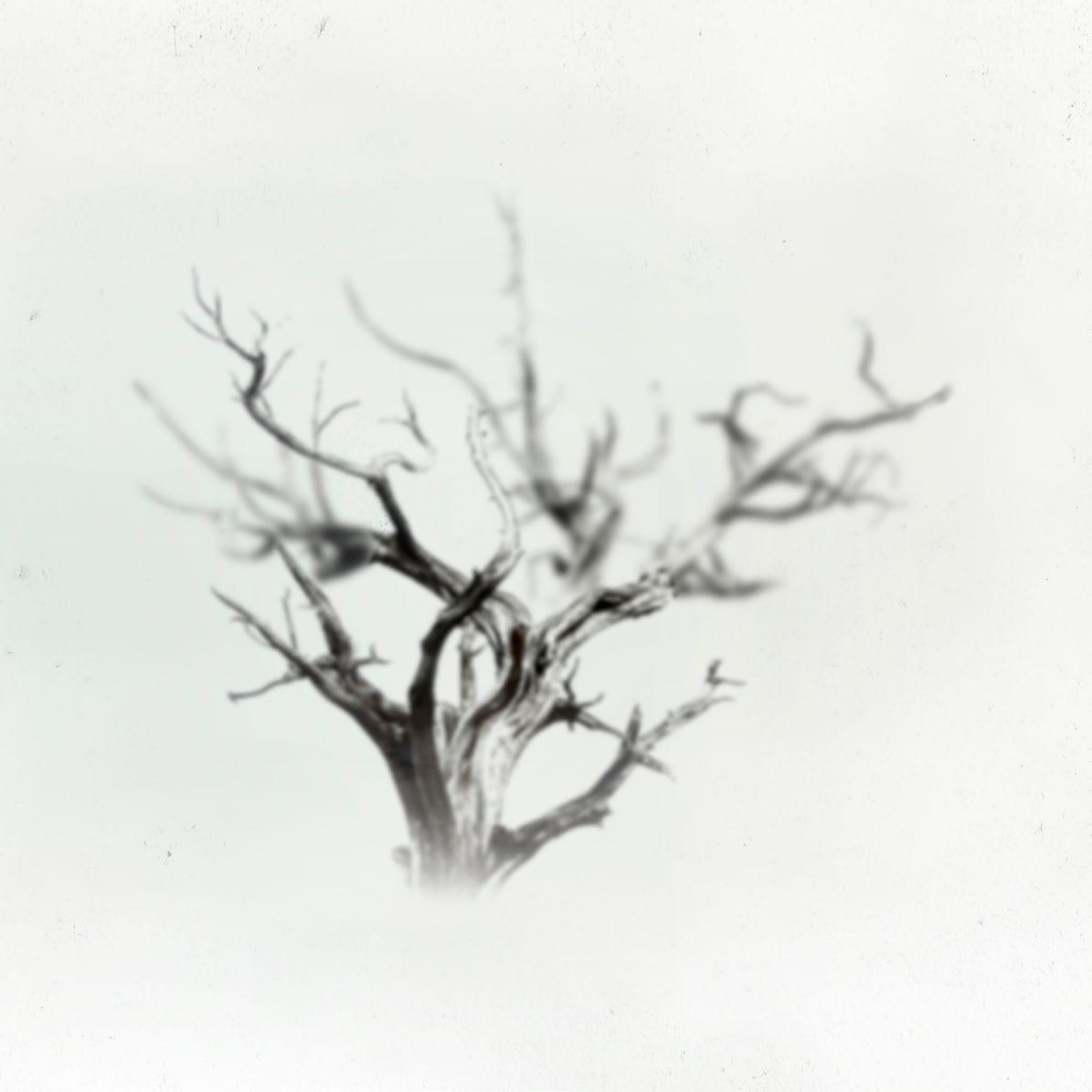

Tree details throughout catalogue: Kim Demuth





Lonely Planet 3 [edited detail] 2018
Tree details throughout catalogue: Henri van Noordenburg De Familie [edited detail] 2017
Cover: Kim Demuth
Lonely Planet 3 [edited detail] 2018
Top of foldout: Henri van Noordenburg
Grebbe Linie 2016-17

Bottom of foldout: Kim Demuth
Lonely Planet 3 2018


Published and organised by Pinnacles Gallery, Townsville City Council
PO Box 1268
Townsville Queensland, 4810 Australia
Pinnacles@townsville.qld.gov.au
©Galleries, Townsville City Council and the authors 2018
ISBN: 978-0-949461-25-4
Judith Jensen - Acting Team Manager Libraries and Galleries
Erwin Cruz - Exhibitions and Collection Coordinator
Louise Cummins - Education and Programs Coordinator
Rob Donaldson - Digital Media and Exhibition Design Coordinator
Carly Sheil - Digital Media and Exhibition Design Officer
Leonardo Valero - Exhibitions Officer
Emily Donaldson - Exhibitions Officer
Stephanie Smith - Collections Management Officer
Tanya Tanner - Public Art Officer
Sarah Reddington - Education and Programs Officer
Nicole Richardson - Education and Programs Assistant
Danielle Berry - Arts Officer
Wendy Bainbridge - Gallery Assistant
Jo Lankester - Gallery Assistant
Jake Pullyn - Gallery Assistant
Chloe Lindo - Gallery Assistant
Rachel Cunningham - Gallery Assistant
Michael Favot - Gallery Assistant
Pinnacles Gallery
Riverway Arts Centre
20 Village Blvd
Thuringowa Central QLD 4817
Closed Mondays
Tues - Sun: 10am - 5pm
Published on the occasion of
KIM DEMUTH AND HENRI VAN NOORDENBURG
(07) 4773 8871
pinnacles@townsville.qld.gov.au
www.townsville.qld.gov.au
PinnaclesTCC
Exhibition Dates
Pinnacles Gallery, Townsville: 9 February - 18 March 2018
Contributing Authors
Virginia Rigney

Publication Design and Development
Carly Sheil
Acknowledgements
Pinnacles Gallery would like to acknowledge the efforts of the artists, Kim Demuth and Henri van Noordenburg, as well as the support of Townsville City Council in realising this exhibition and supporting publication.
In association with Onespace gallery, Brisbane.
All images courtesy the artist unless otherwise noted.

PINNACLES GALLERY 9 FEBRUARY - 18 MARCH 2018 KIM DEMUTH AND HENRI VAN NOORDENBURG
Tomorrow, and Tomorrow, and Tomorrow
Virginia Rigney

Kim Demuth and Henri van Noordenburg have known each other’s work for many years and their proposition to bring their works together now, in a discreet and implicit dialogue, invites us to find shared sensibility and intent.
Both arrived as immigrants to the unruly fecundity of subtropical Brisbane; van Noordenburg as a young adult from the relative order of Northern Europe and Demuth as a teenager after a peripatetic childhood, moving with his father’s occupation to far flung places of the old Empire. They experienced the incessant change as that city readily shed much of its tenuous colonial form to become an instant city of the late Twentieth Century. That witnessing of flux, within an already unfamiliar place, informs their works now at this time of global volatility and uncertainty when new conflicts and unpredictable climate change erode the vestiges of the known.
They offer instead a visually intentionally quiet navigation between interior life, personal and family histories and landscape, that draw us in to roam through these doorways and flooded fields, these thickets and forests and crumbling towers.
Hesitantly we recognize that their images are made with a photographic practice, but this is not of the camera does-not-lie school, or the crisply manipulated perfection of the digital age. Nor do they recall the experimental alchemical era of early photography. Recoiling from the sheer flatness of a conventional print, their works are from the present moment of Post Photography. Both artists use physical means to manipulate their images – some found, some taken - an approach that is more akin to sculptural creation of threedimensional form. For both, surface qualities made with the hand are metaphors that support the ideas of the work. They defy easy reproduction and reward the viewer encountering them upon the wall.
The exhibitions’ title, Tomorrow, and Tomorrow, and Tomorrow is spoken by Shakespeare’s Macbeth in the final Act of that play, in resolute realization of the endless churn of events and of the inevitable inconsequential nature of our time on earth. Just as this famous soliloquy moves across the past, the present and the future, these works intelligently hold us between time.

1 tomorrow, and tomorrow, and tomorrow
Henri van Noordenburg Hogeweg 135 [detail] 2014
“The exhibitions’ title, Tomorrow, and Tomorrow, and Tomorrow is spoken by Shakespeare’s Macbeth in the final Act of that play, in resolute realization of the endless churn of events and of the inevitable inconsequential nature of our time on earth.”
- Virginia Rigney

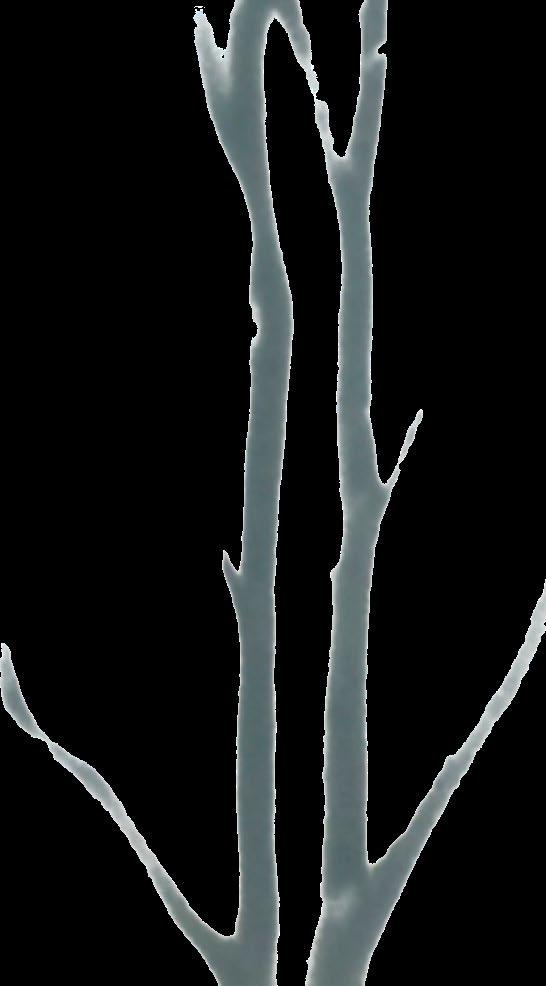


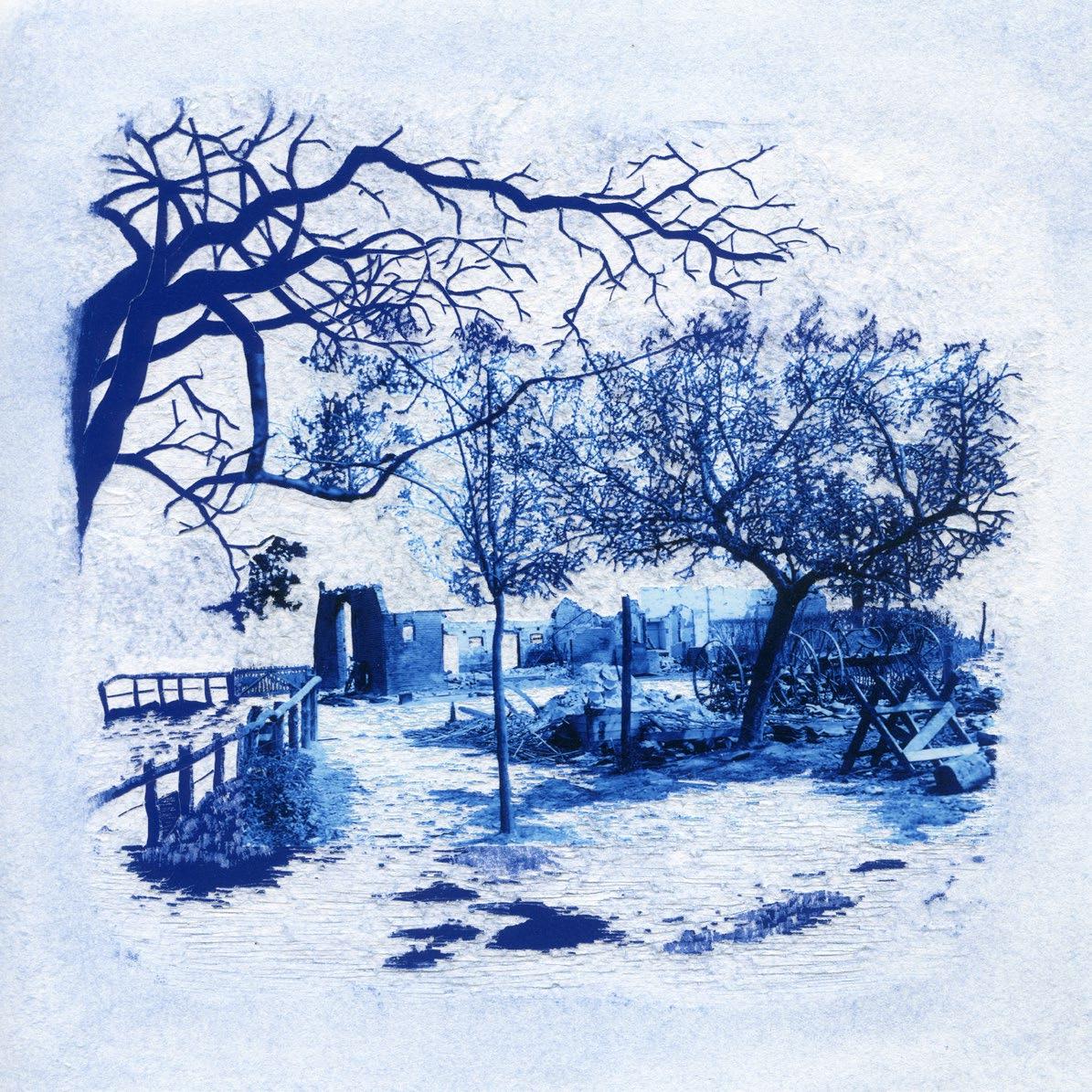
Henri van Noordenburg

The colour of blue silhouetted against clean white appears immediately refreshing, and each of the works by van Noordenburg in this exhibition are indeed so. His choice is not however, made for decorative purpose, for this is not any blue – but Delft Blue, a blue loaded with its own associations and histories and an early example of the globalization of taste and aesthetics.

At the very beginning of the 17th century, as a reflection of its growing confidence and affluence as an international maritime trading nation, precious Chinese porcelain began to be imported into the Netherlands and achieved almost instant vogue status amongst the wealthy. Although the manufacture of porcelain itself was to elude Europeans until over a century later, Dutch potteries began to imitate the Chinese blue and white ware on their own clay bodies from 1615 using a similar cobalt blue painted glaze decoration on a white ground. The renderings of Chinese landscape featured on domestic wares gave way to the portrayal of local scenes; windmills, dykes and villages. Delft, the town where most of this manufacture took place, became synonymous with both the colour and as an expression of Dutch style.
In the choice of this palette of Delft Blue upon white for these works, van Noordenburg makes a deliberate association with his Dutch heritage and as such, is a departure from previous works that have employed a similar carving technique but were rendered in black and white. Although these landscapes of cottages, forests and fields could be a generic rural scene, the association becomes clear when looking at the titles of the works, for each nominates a particular geographic place in the region in central Netherlands where the artist’s family had farmed on the tightly held land.
4 kim demuth and henri van noordenburg
Henri van Noordenburg Zevenhuizerstraat E 56 2014
“Delft, the town where most of this manufacture took place, became synonymous with both the colour and as an expression of Dutch style.”
- Virgina Rigney



 Henri van Noordenburg Hiding Place [detail] 2017
Henri van Noordenburg Hiding Place [detail] 2017
To make this Waterline series, the artist travelled back to these places, and with a combination of archival and family images as well as his own contemporary pictures, he has knitted together real and imagined landscapes in flood, ruined shambles of farmhouses, and fence lines staggering across the horizon. In many of the images, winter trees with expressive fingers of branches stand as resilient marker points and fix the compositions as a picturesque anchor.


In De Familie, three generations sit proudly in their suits and ties at the front of their house. A young man beams from the back row and a girl with the sharp innocence of a white bow, looks out shyly. They are surrounded by an array of magnificent blooms, artfully placed so that they also seem to become family members, so intimately bound to their livelihood and such an expression of horticultural skill.
The artist has grafted this photograph, taken on the 25th wedding anniversary of his great grandparents in 1938, onto a wider frame of reference. The little girl - his great aunt is still alive. The location of this farm happened to be adjacent to the Grebbe Line, a system of channels and basins initially built in 1745 that could be flooded as a defence of last resort and so halt an advancing army across the low lying fields.
Originally designed to repel foot soldiers and horses, it was urgently but vainly deployed in May 1940 to slow the German Panzer advance. The van Noordenburg farm was destroyed and the calm order of neat productive fields and family life built upon them shattered.
7 tomorrow, and tomorrow, and tomorrow
Henri van Noordenburg De Familie 2017
“In De Familie, three generations sit proudly in their suits and ties at the front of their house. A young man beams from the back row and a girl with the sharp innocence of a white bow, looks out shyly.”
- Virginia Rigney



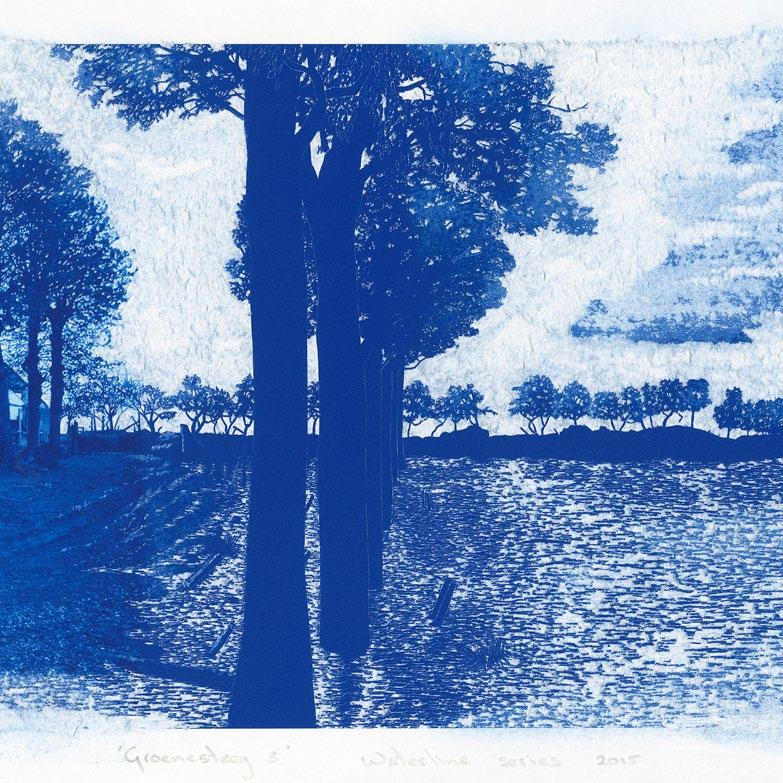
The images are made to appear through a painstaking process of carving back into the paper after the image printed in blue is laid down on the thick Hahnemuhle paper. In some, the marks and textures are delicate, and the precise cuts echo the once ordered landscape. In others, such as the small Polderlandschap I, II and III, which were made while the artist stayed on Magnetic Island off Townsville, the cuts are deeper and larger, revealing the sparse scene of the flood in progress in those terrible days of May 1940.
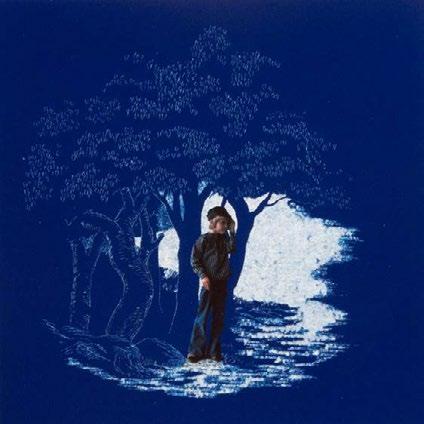

He recalls how time on the island, with the opportunity to look out to a wide view of sea and land, reminded him of the enjoyment of his first independent childhood experiences of walking around in the open Dutch fields. (In Boy on dry land I and II we see this boy dressed up for a celebration in traditional Dutch costume.) This recollection prompted the creation of some of his latest works including the sweeping panorama Grebbe Linie, which stretches over three meters in length.
Van Noordenburgs’ deliberate and painstaking intervention and creation of these images as combinations of memory, history and imagining has allowed him a sustained personal connection to a time and place that had become hazy within his family’s recollections. They also point to a contemporary empathy for the shared impact of displacement that continues to unfold across generations around the world.

10 kim demuth and
henri van noordenburg
Henri van Noordenburg Groenesteeg 5 [detail] 2015
“In Boy on dry land I and II we see this boy dressed up for a celebration in traditional Dutch costume.”
- Virginia Rigney
Henri van Noordenburg Boy on dry land I
Kim Demuth


Despite now being on the other side of the world, Kim Demuth, like van Noordenburg retains a conscious connection to the places from which his parents, as children, had been displaced in the aftermath of WWII. From his peaceful studio on the edge of bushland on the fringes of Brisbane, come what are in effect, sculptural images that appreciate the lingering melancholy of those times but also find new ways to express closeness and connection.
Across all his works, colour is used carefully and sparingly, as Demuth comments he was a child ‘born into a world of colour photography I saw black and white images from somewhere else’ (Demuth 2016, p.27) - and recalls that one of the greatest visual impacts was when black and white peeled into colour in The Wizard of Oz.
Selections from four bodies of recent works are presented in this exhibition and each considers architectural space as an emotional frame of reference. Unlike van Noordenburg’s precise locations, these are almost anonymous, ghosts of places. But they seem to be rendered with a knowingness formed by the less privileged senses of smell, touch and hearing that recall Juhani Pallasmaa’s argument for a richer design language for architecture in his influential text The Eyes of the Skin
‘the world of the eye is causing us to live increasingly in a perpetual present, flattened by speed and simultaneity’ (Pallasmaa 2005, p.19)

11 tomorrow, and tomorrow, and tomorrow
Kim Demuth Nocturnes 32 2017
“the world of the eye is causing us to live increasingly in a perpetual present, flattened by speed and simultaneity”
- Demuth 2016, p.27

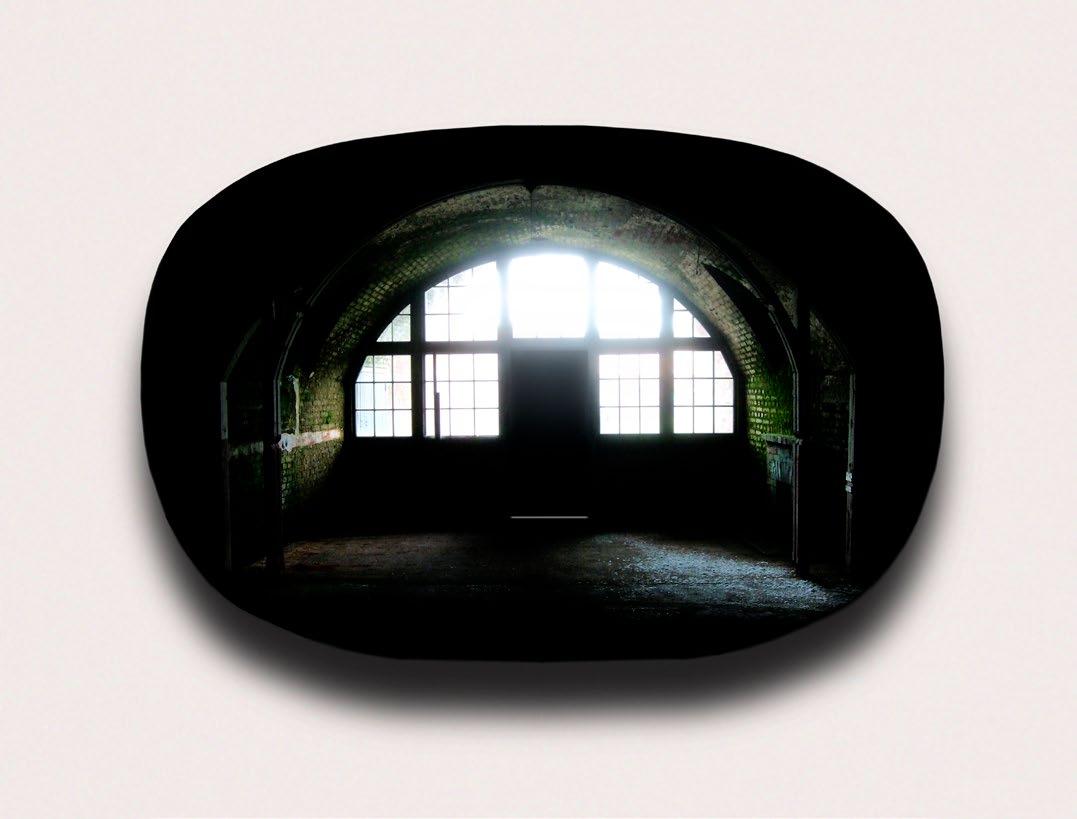
12 kim
demuth and henri van noordenburg
tomorrow, and tomorrow, and tomorrow
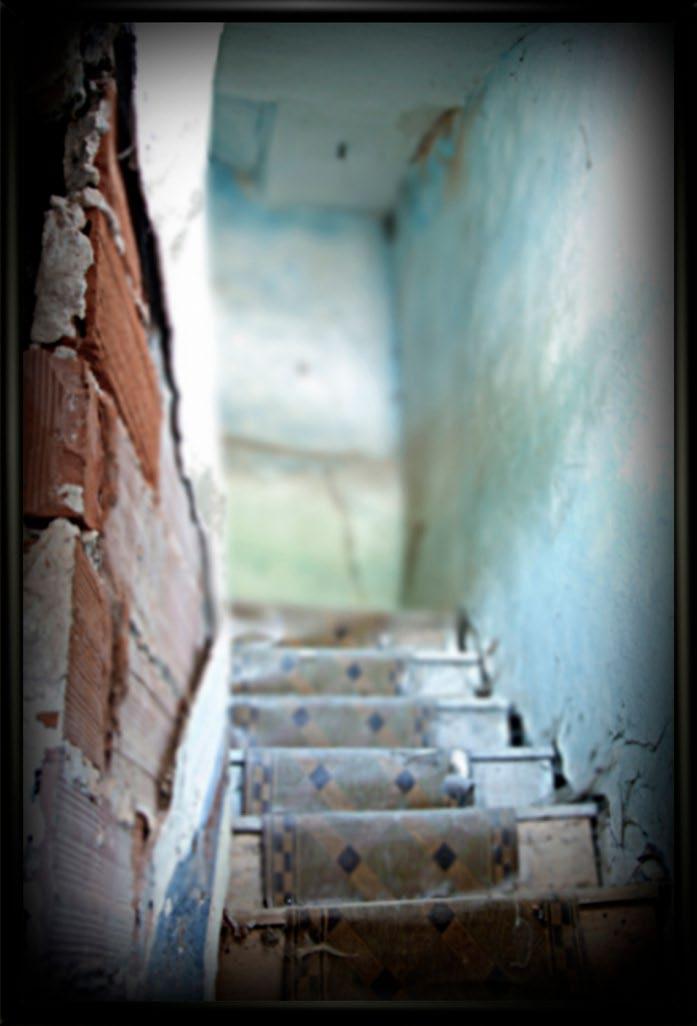

13
In Exodus, Lonely Planet and the Camino series, Demuth intervenes in the clarity of his images with the placement of a thin sheet of slightly textured acrylic on top of the photograph, blurring and effectively diminishing the hierarchy of sharpness that we have come to expect from the medium. The acrylic manipulates and camouflages in the same way that memory and histories shape and distort remembrances.
The Camino series, begun in 2009 and continued over three solo exhibitions, was the first time that the artist used this process. The images of abandoned and crumbling interiors, suffused with a soft light, bare no evidence of their location, but were made over a 900km walk along one of the most famous pilgrimage trails in the world – the Camino de Santiago – from France across northern Spain to the resting place of St James at Santiago de Compostela. The artist and his partner did not make the journey for religious purpose, but each work takes on the sensation of a metaphorical journey within itself. In finding a beauty in these spaces that are so redolent of past lives, but which are far from the conventional idea of historic sites normally ‘claimed’ photographically by the passing tourist, Demuth literally becomes a humble pilgrim offering contemplation and respect.


14 kim demuth and henri van noordenburg
“The images of abandoned and crumbling interiors, suffused with a soft light, bare no evidence of their location, but were made over a 900km walk along one of the most famous pilgrimage trails in the world...”
- Virginia Rigney
Kim Demuth Campo 4.16pm 20.06.2008 2010

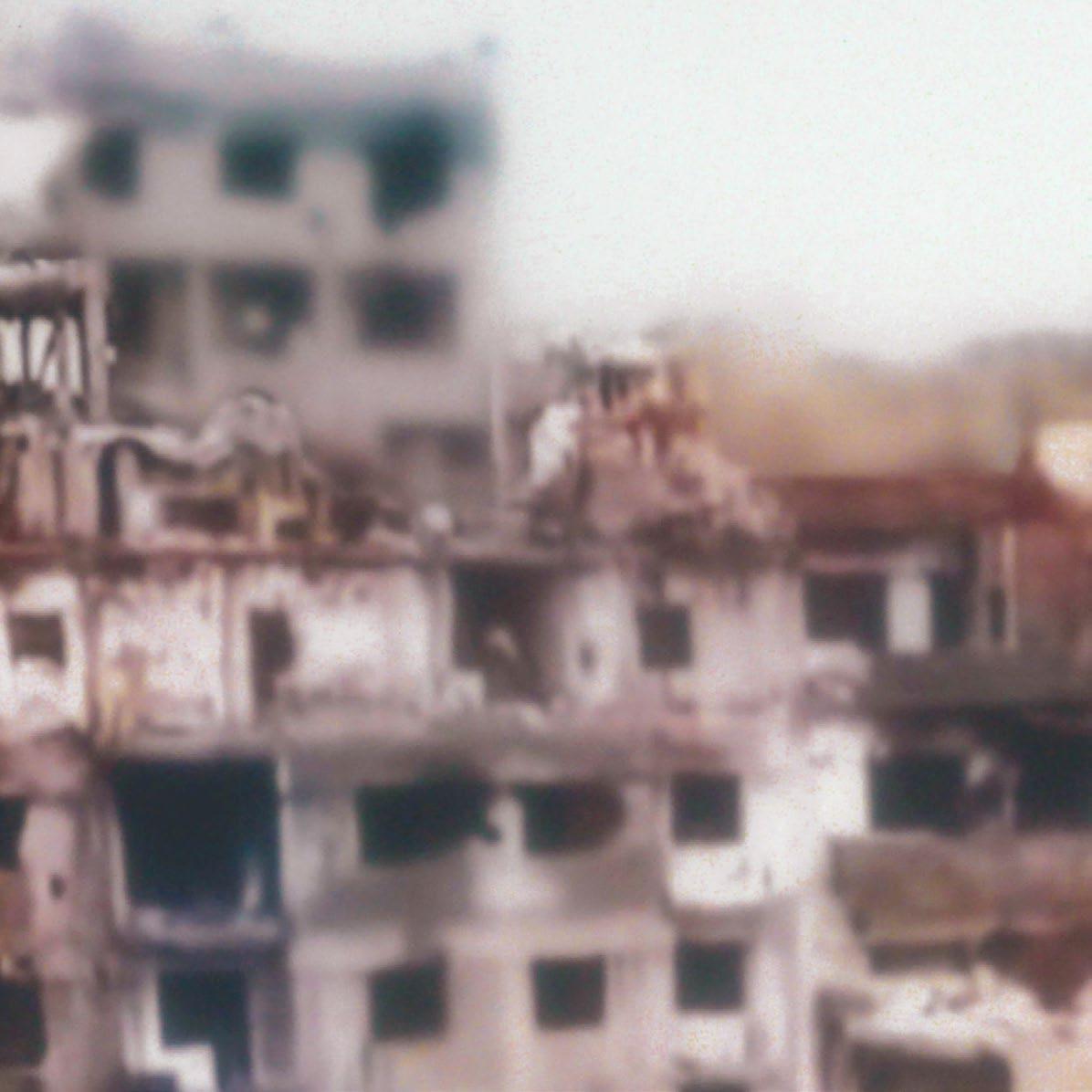

 Kim Demuth Exodus 6 [detail] 2017
Kim Demuth Exodus 6 [detail] 2017
In Exodus we can make out the shapes of partially destroyed buildings, and start to understand that these once bustling cityscapes are now war zones. Made during the recent conflicts in Syria, Demuth sought to not pass political judgment on the circumstances of that war, and although he sourced images from contemporary conflict, they could just as well be Dresden or East London. Through real-time media coverage, the world has watched the unfolding refugee crisis, where millions have been forced to cross through unwelcoming borders, with the painful realization that we are witnessing the replication of the trauma of the displacements of WWII.


Lonely Planet makes a sad pun of the well known guide book series that encouraged independent off-the-beaten-track travel, to express alarm that in this age of rapid climate change, that this planet that we are all on is indeed lonely. The chill colours of the rising sea now engulfing the once confident tower in Lonely Planet 3, may seem a dystopian vision, but the recent cycle of intensive hurricanes that surged through the Caribbean and US east coast make the constructed view uncannily real.

17 tomorrow, and tomorrow, and tomorrow
Kim Demuth Lonely Planet 2 [detail] 2018
“
Lonely Planet makes a sad pun of the well known guide book series that encouraged independent off-the-beaten-track travel, to express alarm that in this age of rapid climate change, that this planet that we are all on is indeed lonely.”
- Virginia Rigney

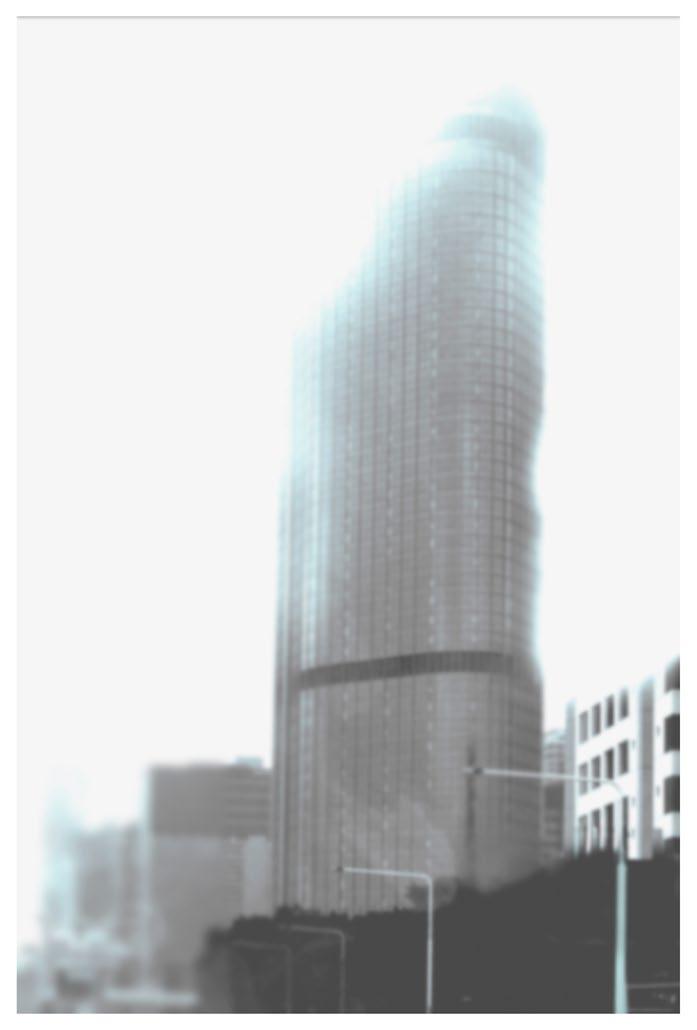
18 kim demuth and henri van noordenburg

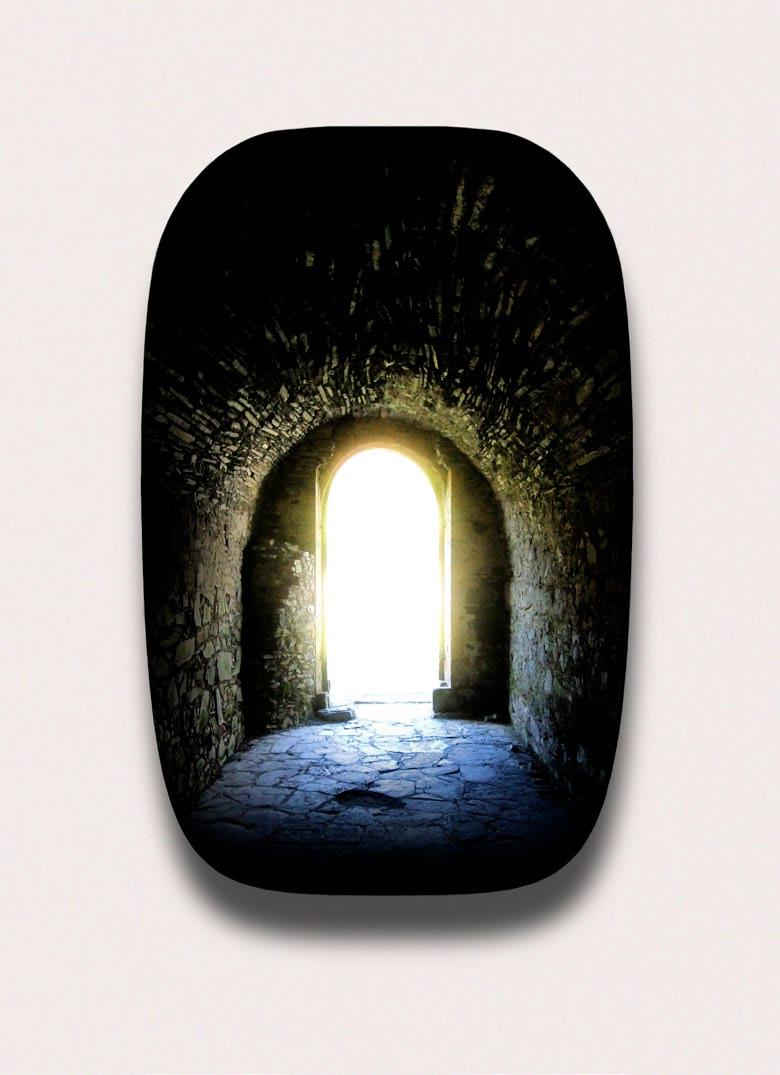
19
tomorrow, and tomorrow, and tomorrow
The title of Nocturnes, a suite of irregular roundel shapes commenced in 2013, at first seems like an anachronism for a group of images whose primary visual connection is a view from darkness towards blinding sunlight. Each image is framed to glimpse towards the searing white of a window or opened door and Demuth moulds the paper to sit off the wall like another window, ‘to offer an escape route via a portal, towards a promise of something bigger than we cannot know’. (Demuth 2016, p.27)
These works would resonate with Pallasmaa who also reflects on the symbolic functioning of the window as portal. ‘In our time, light has turned into a mere quantitative matter and the window has lost its significance as a mediator between two worlds, between enclosed and open, interiority and exteriority, private and public, shadow and light.’ (Pallasmaa 2005, p.47)
The artist began creating this series at a particularly sad time following the death of his mother. He and his father undertook a journey around the historic places in the UK that replicated the one that she had done many years earlier with his father. The title Nocturnes then can be read as an emotional state of darkness and a desire to find a space for contemplation beyond grief.


20 kim demuth and henri van noordenburg
Kim Demuth Nocturnes 29 2017
“In our time, light has turned into a mere quantitative matter and the window has lost its significance as a mediator between two worlds, between enclosed and open, interiority and exteriority, private and public, shadow and light.”
- Pallasmaa 2005, p.47
On time and witness
The original conception of this exhibition occurred during the time of Cyclone Debbie ravaged the coast of Queensland in the late summer 2017 causing widespread flooding, damage and some casualties down into Northern NSW. Cyclones are part of life in Tropical North Queensland, just as for the Dutch farmers the knowledge of the Grebbe Line and its potential for destruction hovered over them, or indeed our own acceptance, like Macbeth, that death is inevitable. In acknowledging such trauma and making inquiry into these large questions, we also sense a resilient spirit in these works of Demuth and van Noordenburg, that welcomes and sustains the viewer.
References
Pallasmaa, J.


The Eyes of the Skin Architecture and the Senses (2nd Edition) Academy Press London 2005
Demuth, K.
Exodus (Exhibition Catalogue)

Galerie Kunstkomplex Wuppertal, Germany 2016
Virginia Rigney is an independent writer and curator
21 tomorrow, and tomorrow, and tomorrow
Kim Demuth Nocturnes 28 2017


22 kim demuth
and henri van noordenburg




24 kim demuth and henri van noordenburg
Henri van Noordenburg Door oorlogsgeweld verwoeste boerderij. Lokatie onbekend I 2014



25 tomorrow, and tomorrow, and tomorrow
Kim Demuth Nocturnes 37 2017

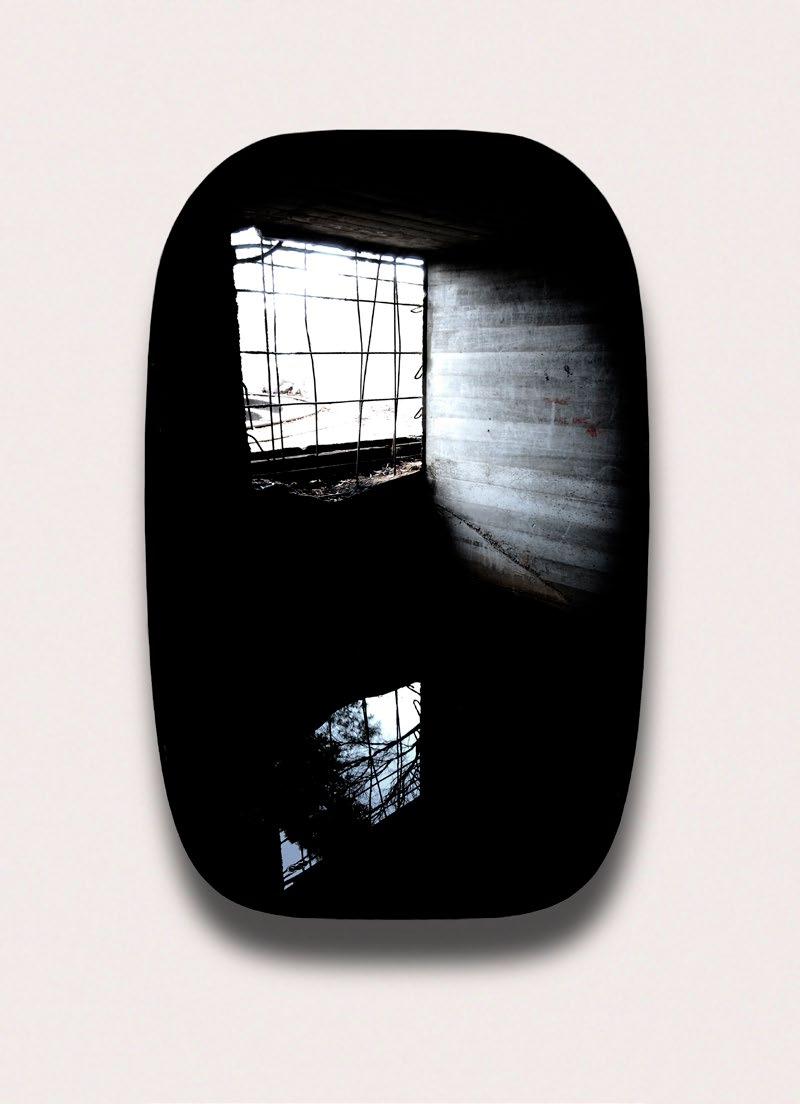
26 kim demuth and
henri van noordenburg

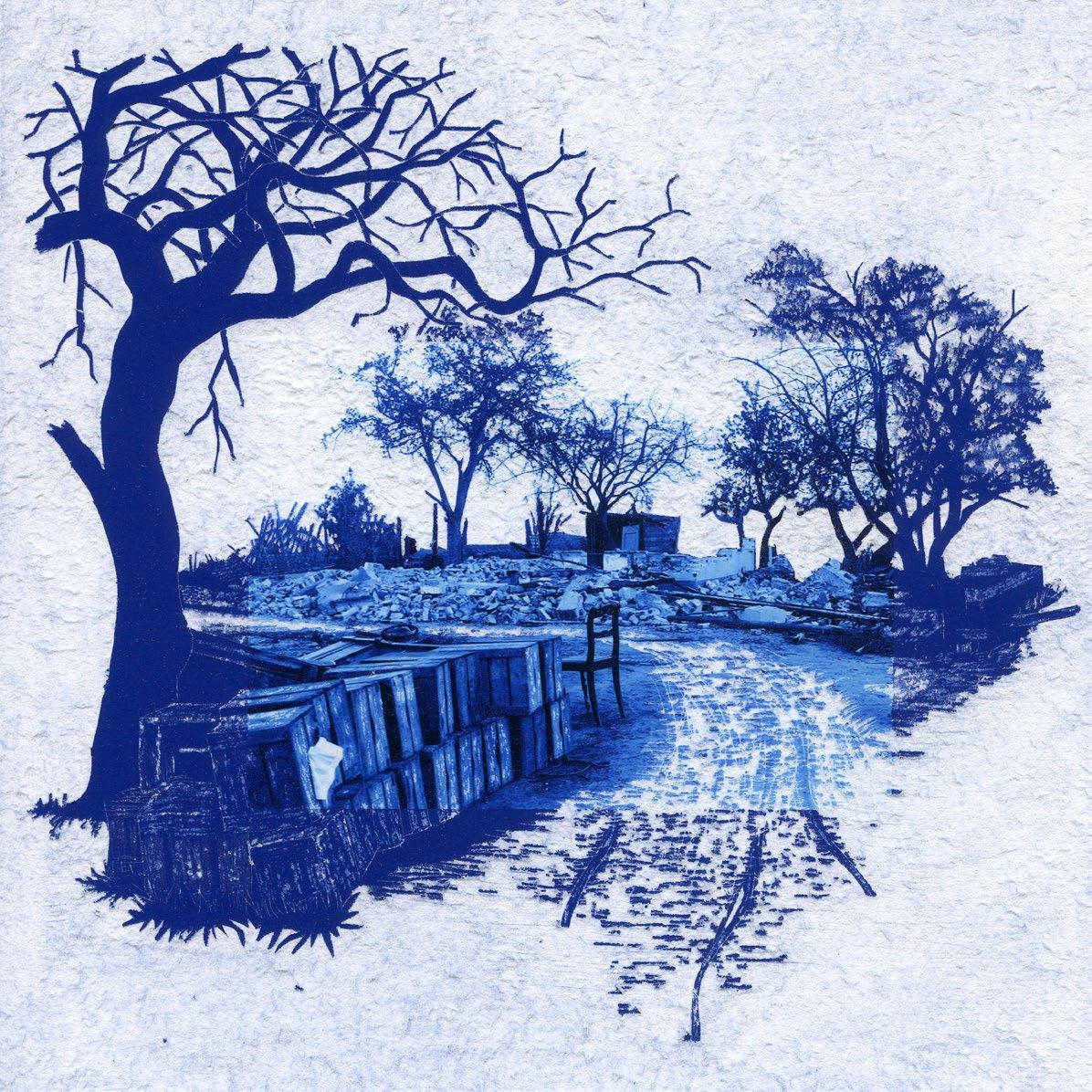


28 kim demuth and henri van noordenburg
Henri van Noordenburg Lageweg 39 2014


29
and tomorrow, and tomorrow
tomorrow,
Kim Demuth Nocturnes 44 2017


30 kim demuth
and henri van noordenburg

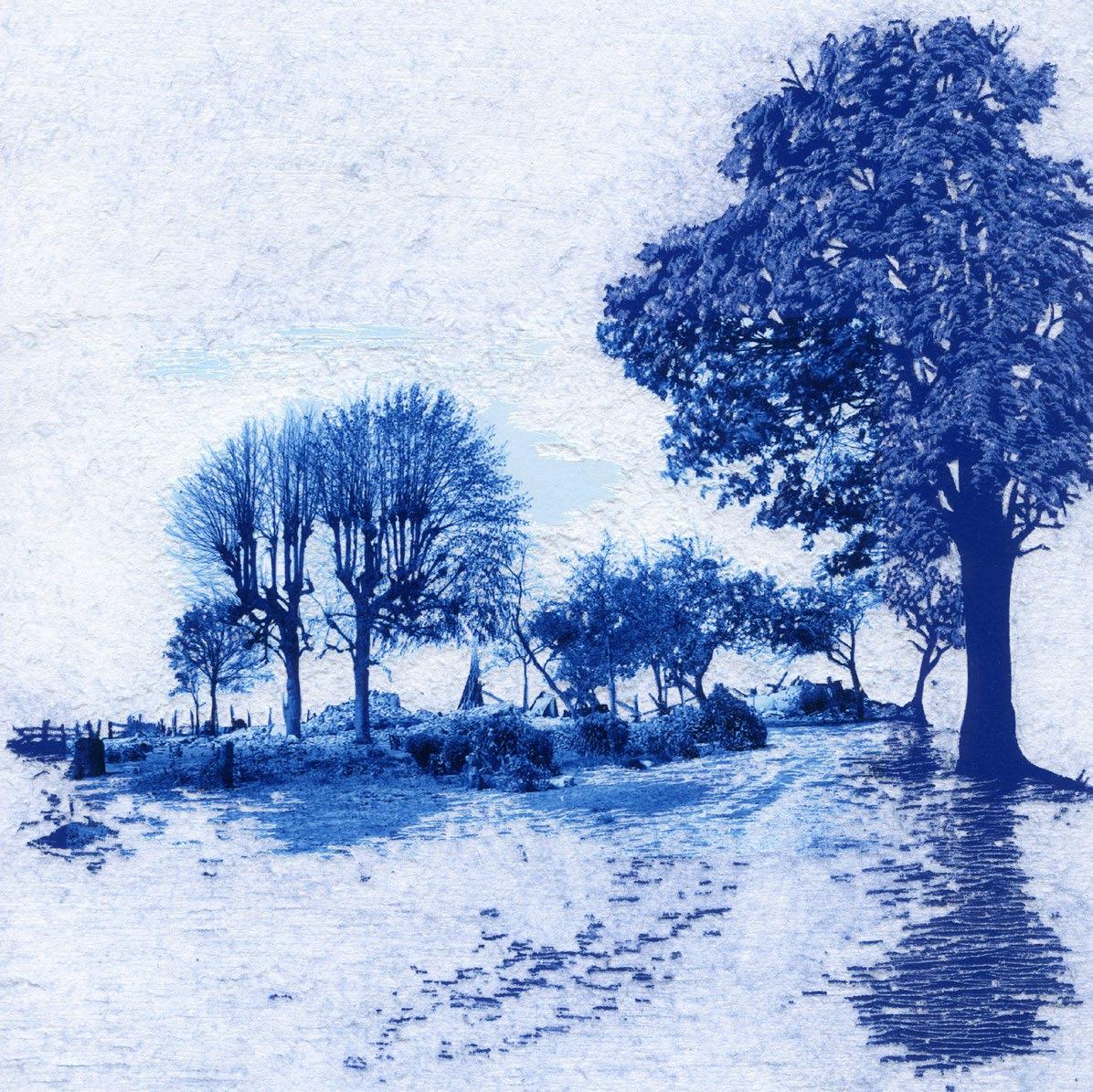


32 kim demuth and henri van noordenburg
Henri van Noordenburg Door oorlogsgeweld verwoeste wooning van T. A. Epskamp. Lokatie onbekend 2014



33 tomorrow, and tomorrow, and tomorrow
Kim Demuth Nocturnes 41 2017


34 kim
demuth and henri van noordenburg




36 kim demuth and henri van noordenburg
Henri van Noordenburg Boerderij “De Drie Morgen” 2014


37 tomorrow, and tomorrow, and tomorrow Kim
11.33am 13.11.2009
Demuth
2012

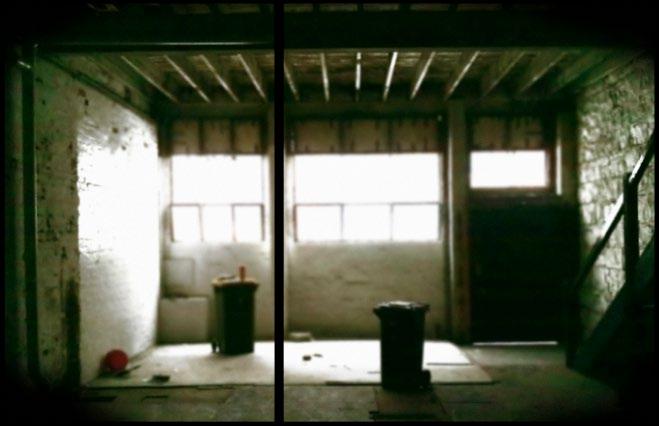
38 kim demuth and
henri van noordenburg
tomorrow, and tomorrow, and tomorrow


39
Kim Demuth
Kim Demuth was born in Crawley, England, but continually moved around the world as a child before his family eventually settled in Brisbane, Australia when he was a teenager. Demuth graduated from Queensland University of Technology (Australia) in 1999 with a BA (Honours) in Visual Arts (First Class).
Since then he has exhibited extensively nationally and internationally, including solo shows at Galerie Bardohl & Scheel, Berlin (2017), Galerie KunstKomplex, Wuppertal (2016), Ipswich Art Gallery (2015), Queensland Centre for Photography, Brisbane (2012-2014), Artspace, Mackay (20112012), Beam Contemporary, Melbourne (2010-2012), Jan Manton Art, Brisbane (2006-2010), Esa Jaske Gallery, Sydney (2004), The Farm, Brisbane (2004), Gallery 482, Brisbane (2003), The Institute of Modern Art, Brisbane (2003), Soapbox Gallery, Brisbane (1999-2002), and Satellite Space, Brisbane (2000).
Various group shows include Galerie Bardohl&Scheel, Berlin (2017), Blindside Gallery, Melbourne (2016), Hongik University, Museum of Art, Seoul (2015), Photo LA, Los Angeles (2008-2014), Project A7 Gallery, Santa Monica (2012), Schwartz Gallery, London (2011), Kunst Pavilion, Munich (2010), Beam Contemporary, Melbourne (2010), Metro Arts (2009), Blindside Gallery, Melbourne (2005), Arc Biennial of Art, Brisbane (2005), The Block, QUT, Brisbane (2005), and Museum of Brisbane (2004).
Since graduating he has been employed within the Visual Arts as a university teacher, workshop technician, as well as developing and facilitating many school/children’s creative workshops. Demuth has also worked independently as a curator, and on various public art commissions including the Old Museum of Brisbane and the Queensland State Archives, amongst other related activities. His works belong to numerous institutional and private collections both nationally and internationally.
Artist Statement
We worship false idols or gods and tell tales of heavens and hells, force the world to submit and believe in them; we are a strange creature for this. I realised during my studies in the visual arts, an arts practice is as restrained by the institutions as it is by the field and world it exists within. We are all condemed to conform in some way or another, yet we strive for emancipation, and that is what I decided to make work about.
The lure of a ‘way out’ and a simultaneous fear of it, is something humans have desired to understand as far back as Plato’s ‘Allegory of the Cave’ and beyond. However, to quote Wittgenstein “the limits of my language are the limits of my world - we keep running up against the walls of our cage”. Therefore, the more we attempt to explain, the thicker the walls become. As a visual artist, all I can offer to an audience is to encourage a way of imagining what exists beyond the surface of the works I create. I began as a sculptural/installation based artist but always employed photographic imagery or video, yet the surface of 2D media always bugged me. The flatness of it was like an inpenetrable wall – a tease if you like of what existed on the other side. But in time I realised this was precisely why I was drawn to it, as it had a lot to do with the way I perceived the world, and therefore, I began to exploit this limitation of the flat image.
It was almost an attempt to simultaneously imprison and release it, by sculpting, manipulating and utilising illusionary surfaces to trap something perceptually physical behind them. It helped me understand the limits of my own interactions and frustrations of the outer world. Possessing a mild dissociative disorder, for me, this physical world in which we live, is about as real as the one seen upon television or at the cinema, a painting, or a photograph. I chose the photograph as a means of recording the fiction in which I live, the prison to escape from, and the potential to move beyond it.
Represented by Galerie KunstKomplex (Wuppertal) and Galerie Bardohl & Scheel (Berlin), Germany

40 kim demuth and henri van noordenburg
Henri van Noordenburg
Henri van Noordenburg was born in Amersfoort, The Netherlands, in 1967. During his early years he developed an interest in story telling. Moving to Australia in 1991, he completed a Visual Arts and a Creative Writing degree at Griffith University from 1994 until 1999, followed by his Master’s in Photography and Theatre at Queensland University of Technology (QUT) 2003 -2005. The result of his Master’s was a one-man theatre production Two Roads in Green Pasture Landscape 2004 (Brisbane Powerhouse).
Henri works at the Queensland Art Gallery of Modern Art as Project Officer for Regional Services and is a practicing artist. He worked as a lecturer in Photography at QUT and QUT International from 2002 till 2016, was Visual Arts Coordinator at the Brisbane Powerhouse from 2005 until 2007, was Board Member for Queensland Centre for Photography (QCP). He delivered a paper at 2008’s Oral History conference Broome, as well as guest speaking at Estonian Arts Academy, Estonian Historical Museum, and Griffith University, Queensland College of Art.
Henri had his first international group show in 1997 followed by his first solo exhibition in 2005. Henri was an Artist in Residence at the Eesti Instituut, Tallinn, Estonia in 2004, resulting in his first publication and an international touring exhibition, both entitled home / Kodu 2006 - 2008.
In 2010 Henri produced his first large-scale, hand carved on Photo Rag print a technique similar to the sgraffito process. This unique technique in combination with photography marked a significant change in his art practice. He received the Career Development Grant in 2011 and, most recently, won The Jeff Spann Award 2016, Australian Pacific LNG Award 2014 and the Clayton UTZ in 2012 and selected in the top ten of emerging focus folio review at Photo LA 13 (Los Angeles, USA).

His work features in the inaugural Manila Biennale Open City 2018 and joint exhibition Tomorrow, and Tomorrow, and Tomorrow with Brisbane based artist and long-time friend Kim Demuth at Pinnacles Gallery, Townsville and Onespace in Brisbane. His work was exhibited in 5 international art fairs in 2016 including Scope Basel and Kolner Liste and was showcased at Photo LA (2011 to 2015). In 2013 his work featured in an exhibition at Brisbane Square Library, in ‘The Imperceptible something’ at the Caboolture Regional Gallery, The Book about Death Tweed River Regional Gallery, Moreton Bay Art Award Strathpine regional Gallery, Efface a solo exhibition at Edmund Pearce gallery, Melbourne and in Silence II at the Bundaberg Regional Gallery, Dusk to Dark at QCP and Toowoomba Regional Gallery 2014; Berliner Liste and Blooom art fair (2014);
The works by Henri were published in IANN magazine (2012), unless you will (blog) (2012) Lenscratch art blog (2013 and 2015), Art Monthly (2013), Installation magazine (blog) (2014) and publication by the Luicda Magazine and QCP (2009 – 2014), Silvershotz Magazine (online, 2015). Fabrik Magazine (USA, 2015)
Represented by Gallerie Kunst Komplex, Wuppertal Germany
His work is part of several collections, including the Wallis Annenberg at Los Angeles County Museum of Arts (LACMA), Caboolture Regional Art Gallery, Artspace Mackay, Gladstone Regional Art Gallery, Daryl Hewson Collection; Queensland Centre for Photography; Bundaberg Regional Art Gallery; Mater Hospital, Brisbane; Prince Charles Hospital, Brisbane; as well as several private collections (Australia, New Zealand, Israel, USA and Europe.
41 tomorrow, and tomorrow, and tomorrow


42 kim
demuth and henri van noordenburg
List of Works
Kim DEMUTH
Nocturnes 1 2013
Sculptural Photography
Variable Size
Edition 4
Kim DEMUTH
Nocturnes 4 2013
Sculptural Photography
Variable Size
Edition 3
Kim DEMUTH
Nocturnes 5 2013
Sculptural Photography
Variable Size
Edition 2
Kim DEMUTH
Nocturnes 6 2013
Sculptural Photography
Variable Size
Edition 4
Kim DEMUTH
Nocturnes 7 2013
Sculptural Photography
Variable Size
Edition 5
Kim DEMUTH
Nocturnes 8 2013
Sculptural Photography
Variable Size
Edition 4
Kim DEMUTH
Nocturnes 10 2013
Sculptural Photography
Variable Size
Edition 7
Kim DEMUTH
Nocturnes 11 2013
Sculptural Photography
Variable Size
Edition 5
Kim DEMUTH
Nocturnes 13 2014

Sculptural Photography
Variable Size
Edition 2
Kim DEMUTH
Nocturnes 18 2013
Sculptural Photography
Variable Size
Edition 1
Kim DEMUTH
Nocturnes 23 2013
Sculptural Photography
Variable Size
Edition 1
Kim DEMUTH
Nocturnes 24 2017
Sculptural Photography
Variable Size
Edition 2
Kim DEMUTH
Nocturnes 25 2017
Sculptural Photography
Variable Size
Edition 1
Kim DEMUTH
Nocturnes 28 2017
Sculptural Photography
Variable Size
Edition 3
Kim DEMUTH
Nocturnes 29 2017
Sculptural Photography
Variable Size
Edition 2
Kim DEMUTH
Nocturnes 32 2017
Sculptural Photography
Variable Size
Edition 2
Kim DEMUTH
Nocturnes 33 2017
Sculptural Photography
Variable Size
Edition 2
Kim DEMUTH
Nocturnes 36 2017
Sculptural Photography
70 x 44 cm
Edition 1
Kim DEMUTH
Nocturnes 37 2017
Sculptural Photography
Variable Size
Edition 1
Kim DEMUTH
Nocturnes 41 2017
Sculptural Photography
Variable Size
Edition 1
Kim DEMUTH
Nocturnes 42 2017
Sculptural Photography
Variable Size
Edition 1
Kim DEMUTH
Nocturnes 44 2017
Sculptural Photography
70 x 44 cm
Edition 1
Kim DEMUTH
Nocturnes 47 2017
Sculptural Photography
Variable Size
Edition 1
Kim DEMUTH
Nocturnes 43 2017
Sculptural Photography
Variable Size
Edition 1
Kim DEMUTH
Nocturnes 50 2017
Sculptural Photography
Variable Size
Edition 1
Kim DEMUTH
Exodus 1 2017
Sculptural Photography
50 x 150 x 4 cm
Edition 2 of 5
Kim DEMUTH
Exodus 6 2017
Sculptural Photography
120 x 69 x 4 cm
Edition 2 of 5
Kim DEMUTH
Exodus 10 2017
Sculptural Photography
100 x 75 x 4 cm
Edition 2 of 5
Kim DEMUTH
Lonely Planet 1 2017
Sculptural Photography
137 x 41 x 4 cm
Edition 2 of 5
Kim DEMUTH
Lonely Planet 2 2018
Sculptural Photography
92 x 138 x 4 cm
Edition 1 of 5
Kim DEMUTH
Lonely Planet 3 2018
Sculptural Photography
146 x 62 x 4 cm (left panel);
104 x 62 x 4 cm (middle panel);
146 x 62 x 4 cm (right panel), triptych
Edition of 1 of 5
Kim DEMUTH
Campo 4.16pm 20.06.2008 2010
Sculptural Photography
106 x 156 x 6.5 cm
Edition 1 of 3
Kim DEMUTH
Chozas de Abajo
3.34pm 14.06.2008 2010
Sculptural Photography
106 x 156 x 6.5 cm
Edition 1 of 3
Kim DEMUTH
Ribadeo 8.45pm 19.07.2008 2010
Sculptural Photography
204 x 123 x 6.5 cm, diptych
Edition 1 of 3
43 tomorrow, and tomorrow, and tomorrow
Kim DEMUTH
11.33am 13.11.2009 2012
Sculptural Photography
110 x 172 x 6.5 cm, diptych
Edition 1 of 3
Kim DEMUTH
9.55am 11.6.2008 2012
Sculptural Photography
110 x 88 x 6.5 cm
Edition 1 of 3
Henri van NOORDENBURG
Boerderij “De Drie Morgen” 2014
Hand carved photographs on Hahnemulhe
Photographer unknown 1940; from Archief Eemland.
25 x 25 cm (light box);
23 x 23 cm (image)
Edition 1 of 5
Henri van NOORDENBURG
Boerderij “t Zwaantje” 2014
Lightbox Inkjet print 2018
Original hand carved photographs on Hahnemulhe.
Photographer W. Plasmeijer 1940; from Archief Eemland
25 x 25 cm (light box);
23 x 23 cm (image)
Edition 1 of 5
Henri van NOORDENBURG
Lageweg 39 2014
Lightbox Inkjet print 2018
Original hand carved photographs on Hahnemulhe
Photographer unknown 1940;. from Archief Eemland
25 x 25 cm (framed);
23 x 23 cm (image)
Edition 1 of 5
Henri van NOORDENBURG
Door oorlogsgeweld verwoeste
boerderij. Lokatie onbekend I 2014
Lightbox Inkjet print 2018
Original hand carved photographs on Hahnemulhe
Photographer unknown 1940; from Archief Eemland
25 x 25 cm (framed);
23 x 23 cm (image)
Edition 1 of 5
Henri van NOORDENBURG
Door oorlogsgeweld verwoeste wooning van T. A. Epskamp.
Lokatie onbekend 2014
Lightbox Inkjet print 2018
Original hand carved photographs on Hahnemulhe
Photographer Pol. van de Atelier 1940; from Archief Eemland
25 x 25 cm (framed);
23 x 23 cm (image)
Edition 1 of 5
Henri van NOORDENBURG
Zevenhuizerstraat E 56 2014
Lightbox Inkjet print 2018
Original hand carved photographs on Hahnemulhe
Photographer Pol. van de Atelier 1940; from Archief Eemland
25 x 25 cm (framed);
23 x 23 cm (image)
Edition 1 of 5
Henri van NOORDENBURG
Hogeweg 135 2014
Lightbox Inkjet print 2018
Original hand carved photographs on Hahnemulhe
Photographer unknown 1940; from Archief Eemland
25 x 105 cm (framed);
23 x 100 cm (image)

Edition 1 of 5
Henri van NOORDENBURG
Groenesteeg 5 2015
Lightbox Inkjet print 2018
Original hand carved photographs on Hahnemulhe
Photographer unknown 1940; from Archief Eemland 25 x 105 cm (framed); 23 x 100 cm (image)
Edition 1 of 5
Henri van NOORDENBURG
Wooning van J. van Noordenburg, Liendert 2014-15
Hand carved Photographs on Hahnemulhe
Photographer unknown 1940; from Archief Eemland 80 x 80 cm (image)
Henri van NOORDENBURG
Grebbe Linie 2016-17
Hand carved Photographs on Hahnemulhe
Photographer unknown 1940; from Archief Eemland
40 x 320 cm (image)
Henri van NOORDENBURG
De Familie 2017
Hand carved photograph on Hahnemulhe 40 x 40 cm (image)
Henri van NOORDENBURG
Door oorlogsgeweld verwoeste boerderij. Lokatie onbekend II 2018
Hand carved Photographs on Hahnemulhe
Photographer unknown 1940; from Archief Eemland 20 x 20 cm (image)
Henri van NOORDENBURG
Hiding Place 2017
Hand carved Photographs on Hahnemulhe
50 x 230 cm (frame); 40 x 220 cm (image)
Shortlisted 2017 Bowness Art Prize, Monash Art Gallery. Melbourne, Australia.
Henri van NOORDENBURG
Hiding Place II 2017
Hand carved Photographs on Hahnemulhe
80 x 80 cm (image)
Henri van NOORDENBURG
Boy on dry land II 2018
Hand carved Photographs on Hahnemulhe
Photographer unknown 1940; from Archief Eemland
20 x 20 cm (image)
Henri van NOORDENBURG
Picnic 2018
Hand carved Photographs on Hahnemulhe
Photographer unknown 1940; from Archief Eemland 20 x 20 cm (image)
44 kim
demuth and henri van noordenburg


45 tomorrow, and tomorrow, and tomorrow Kim Demuth 9.55am 11.06.2008 2012

46 kim demuth and
henri van noordenburg




















 Henri van Noordenburg Hiding Place [detail] 2017
Henri van Noordenburg Hiding Place [detail] 2017










 Kim Demuth Exodus 6 [detail] 2017
Kim Demuth Exodus 6 [detail] 2017















